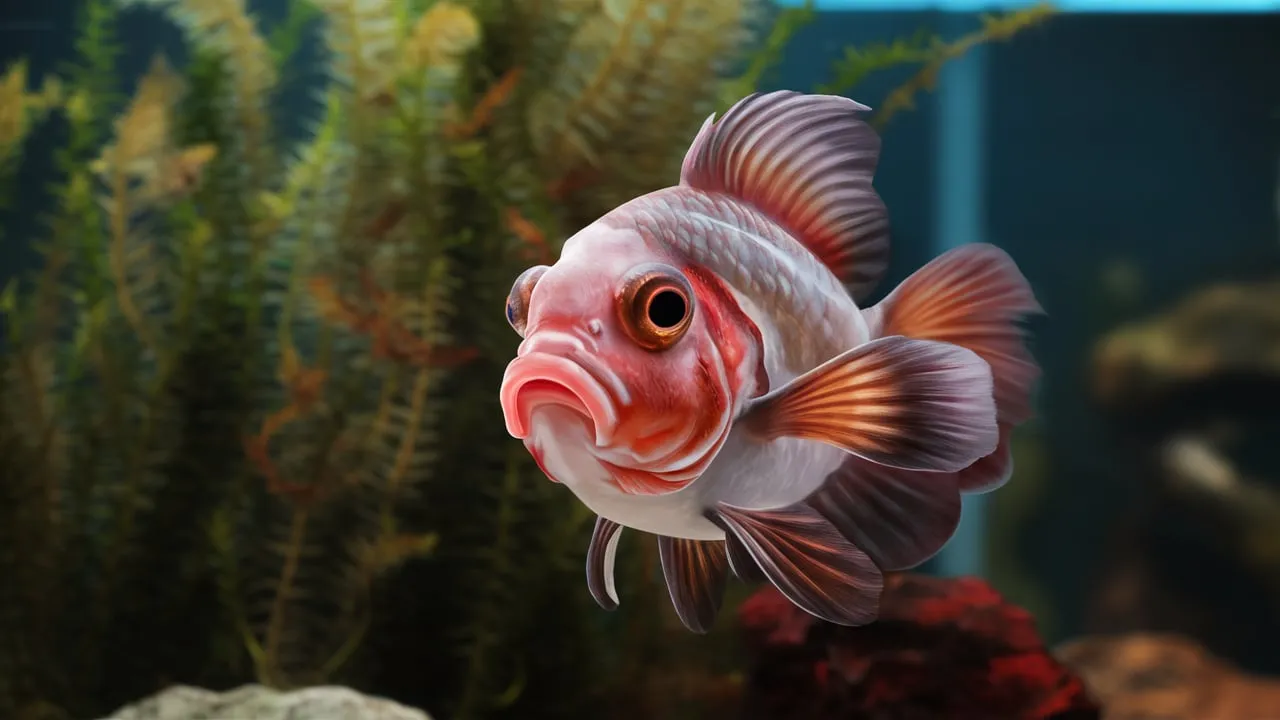Siamese Fighting Fish Health Problems and taking preventive measures is crucial for ensuring the well-being of your beloved fighting fish.
This comprehensive article, Betta Fish Guide will delve into the most prevalent health problems affecting Siamese fighting fish
Common Siamese Fighting Fish Health Problems
Fin Rot
Fin rot is one of the most prevalent health issues affecting Betta fish. It’s typically caused by bacterial infections, often exacerbated by poor water quality.
Symptoms
- Frayed or ragged fins
- Discoloration along fin edges
- Fins appear to be “melting away”
Treatment
- Improve water quality through regular water changes
- Use of antibacterial medications like erythromycin or tetracycline
- In severe cases, consult a veterinarian specializing in fish health
Ich (White Spot Disease)
Ich, caused by the parasite Ichthyophthirius multifiliis, is a common and highly contagious disease among freshwater fish, including Bettas.
Symptoms
- White, salt-like spots on the body and fins
- Fish rubbing against objects in the tank
- Lethargy and loss of appetite
Treatment
- Raise water temperature gradually to 86°F (30°C) for several days
- Use of ich-specific medications containing malachite green or copper sulfate
- Maintain treatment for at least a week after symptoms disappear
Swim Bladder Disorder
Swim bladder disorder affects a Betta’s ability to control its buoyancy, often resulting from overfeeding or constipation.
Symptoms
- Difficulty swimming upright
- Floating at the surface or sinking to the bottom
- Swollen abdomen
Treatment
- Fasting for 2-3 days
- Feeding blanched, deshelled peas to aid digestion
- In severe cases, use of antibiotics prescribed by a veterinarian
Velvet Disease (Gold Dust Disease)
Velvet disease is caused by the parasitic dinoflagellate Piscinoodinium pillulare, which gives infected fish a gold or rust-colored “dusting.”
Symptoms
- Fine, gold or rust-colored “dust” on the fish’s body
- Rubbing against objects in the tank
- Rapid breathing and clamped fins
Treatment
- Dimming aquarium lights (parasites are light-sensitive)
- Using copper-based medications as directed
- Maintaining treatment for at least 10 days after symptoms subside

Dropsy
Dropsy is not a disease itself but a symptom of underlying health issues, often related to kidney dysfunction or bacterial infection.
Symptoms
- Swollen, “pinecone” appearance of scales
- Bulging eyes
- Lethargy and loss of appetite
Treatment
- Isolation in a hospital tank
- Use of broad-spectrum antibiotics
- Epsom salt baths to reduce fluid retention
Gill Flukes
Gill flukes are parasitic worms that live in the gills of Bettas.
Symptoms
- Heavy breathing: The fish may breathe heavily due to gill irritation.
- Clamping fins: The fish may clamp its fins close to its body.
- Loss of appetite: The fish may lose interest in food.
- Lethargy: The fish may become sluggish and less active.
Treatment
- Anti-parasitic medication: Anti-parasitic medications are available to treat gill flukes. Consult a veterinarian or a reputable aquarium store for appropriate medication and dosage.
- Water changes: Regular water changes are essential to remove parasites and maintain good water quality.
Mouth Fungus
Mouth fungus is a fungal infection that affects the mouth and gills of Bettas.
Symptoms
- White or gray fuzz: A white or gray fuzz may appear on the mouth and gills.
- Redness or inflammation: The mouth and gills may become red and inflamed.
- Difficulty eating: The fish may have trouble eating due to pain or difficulty opening its mouth.
- Difficulty breathing: Mouth fungus can affect the gills, making it difficult for the fish to breathe.
Treatment
- Anti-fungal medication: Anti-fungal medication can be used to treat mouth fungus. Consult a veterinarian or a reputable aquarium store for appropriate medication and dosage.
- Water changes: Regular water changes are essential to maintain good water quality.
- Stress reduction: Ensure proper tank conditions, avoid overcrowding, and handle the fish gently.
Preventing Siamese Fighting Fish Health Problems
Prevention is always better than cure when it comes to Betta fish health. Here are some key preventive measures:
Maintain Water Quality: Regular water changes and proper filtration are essential.
Proper Nutrition: Provide a varied diet of high-quality Betta-specific food.
Appropriate Tank Size: Bettas need at least 5 gallons of water to thrive.
Avoid Overfeeding: Feed small amounts 2-3 times daily.
Quarantine New Fish: Always quarantine new fish before introducing them to your main tank.
Advanced Care for Siamese Fighting Fish
Understanding Water Parameters
Maintaining optimal water parameters is crucial for Betta health. Here’s what you need to know:
- Temperature: 76-82°F (24-28°C)
- pH: 6.5-7.5
- Ammonia and Nitrite: 0 ppm
- Nitrate: Below 20 ppm
Regular testing of these parameters can help you catch potential issues before they affect your Betta’s health.
The Role of Stress in Betta Health
Stress is a significant factor in many Betta health problems. Common stressors include:
- Inadequate tank size
- Aggressive tank mates
- Sudden changes in water parameters
- Overhandling
Minimizing these stressors can significantly improve your Betta’s overall health and resistance to disease.
Conclusion
Understanding and addressing Siamese Fighting Fish health problems is crucial for any Betta enthusiast. By maintaining optimal water conditions, providing proper nutrition, and being vigilant for signs of illness, you can ensure your Betta lives a long, healthy life. Remember, early detection and prompt treatment are key to managing most health issues successfully.

Related Posts
Culture Of Infusoria In The Tank: A Microscopic Feast for Fry
Almond Leaf For Betta: A Natural Habitat Enhancer
Clamped Fins On Betta: Causes & Treatment